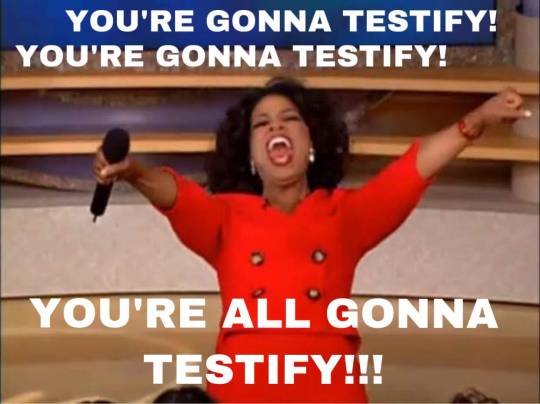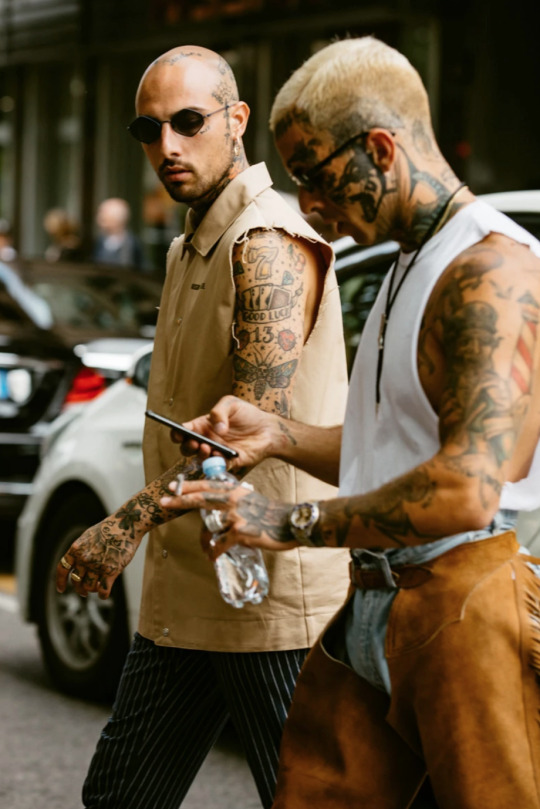Photo


First Image Courtesy of Calvin Klein, found here.
Second image taken from Phrasee.co, found here. Original image from Belvedere Vodka.
Having experience in the fashion industry, I am aware of the sexism that lies in much of its advertising and promotional campaigns. Even in wake of the equality and sexual harassment movements, there are still plenty of examples of blatant sexism and gender inequality in this industry, as well as others.
Gudis’ article regarding America’s advertisement landscape notes that, “reformers considered civic virtue, morality, and the environment to be causally related” (Gudis, 166). The environment so many fought to change still perpetuates certain stereotypes, trends, and tropes that are detrimental to many groups of people, women included. Sex appeal is one of the central ideas marketers rely on - we’ve seen in displayed rather proudly in television shows like Mad Men, where women’s bodies are used in a dehumanizing and cruel way to sell products. Rosewarne’s discussion of the public space being gendered is relevant to this Calvin Klein advertisement from 2016. The #MyCalvins campaign featured a variety of famous celebrities, all with a fill-in-the-blank sentence about something they supposedly did while wearing the product. The contrast between actress Klara Kristin and musician Fetty Wap is clear as day - while her sentence is finished with the word “seduce”, his is finished with “make money”. Kristin is similarly posed in a provocative and suggestive way, where viewers can essentially see up her dress. Klein is no stranger to risque ads, notably with their famous ads of Mark Wahlberg and Kate Moss - yet this specific campaign sparked even more controversy with another photo of the same actress, this time the camera positioned directly below her, the shot looking completely between her legs with an unobstructed view of her underwear. Even though the actress defended the shot, it still is plain to see the blatant sexism in the shot. Moving back to the original photo - the man’s image with the notion of making money connects to Rosewarne’s point about how advertising illustrates, “masculine control, or at least domination, through the use of sexualized images of women”, in how the rapper is framed as the powerful money-maker, while the female is demure, innocent-with-a-hint-of-risk, seemingly waiting for her lover to arrive - her framing completely dependent on male influence (Rosewarne,19). Furthermore, it continues to blur the line between pornography and photography in a way that highlights the role of the voyeur. This ad illustrates how men are seen as the primary actors of the public sphere, while women inhabit the private sphere - it is line with the age-old traditional gender roles of women relegated to the home while men are doing what the woman shouldn’t or couldn’t: working and providing for the family.
The second image was an ad that was quickly removed within hours of its release by Belvedere Vodka as shockingly recent as 2012. The image features a man grasping a woman around her middle, who looks fairly desperate to escape his grip. The words read, “Unlike some people...Belvedere always goes down smoothly”, which is a horrible innuendo. The comment was meant to be a joking poke at the man wanting desperately the woman to perform oral sex on him, even though she clearly doesn’t want to. Many were extremely angered about the ad, saying that it was making light of rape, putting the immensely serious topic in a humorous frame. This goes hand in hand with many topics talked about in the “Advertising and Public Space” article, about the commodification of female sexuality, that women are compared to food/beverage products as a ‘consumable’ image, and perpetuating fear in the public space about sexual harassment and assault (Rosewarne, 14, 26). This piece of media (like television and movies as well) serves to perpetuate this fear of rape and of sexual crimes - yet it works to contribute to the social control of women in public. This fear and control pushes women to see themselves as subservient, as having to constantly be wary of their objectification by men, and that their sexuality is what is seen first by those around them (Rosewarne, 26). Advertisements such as this one, seeing as it was so recently, prove that sex and gender are intertwined with how products are presented and sold. The old trope of “sex sells” still seems to ring true - even if we wish it didn’t - as it is used regularly to present a desirable lifestyle and ideal that will supposedly be achieved when you purchase that product. This is connected to consumerism in a capitalist culture, where the possibility of morally-upright ads can be completely subsumed by the desire to make a big buck.
#sexism in consumer culture#sexism in the fashion industry and ads#dollars over doing the right thing#influence of advertisement on gender and sexuality#self-perception through ads
0 notes
Text
The Impeachment Inquiry Explained through GIFs and Memes
[2014] The U.S. connection to Ukraine, starting before the inquiry was even a reality.
The United States initially forged connections with Ukraine in the early 1990′s, after the country gained independence from the Soviet Union. Moving into the 2010′s, President Obama’s administration offers aid to the president of Ukraine, who at the time was struggling to quell revolts from Separatist forces. Funds were sent to bolster the new government and its military forces, and to provide them help to fight back for peace. Also, Vice President Joe Biden was heading the project with the foreign country, and his son would join the board of a prominent corporation in Ukraine.

Images originally from John Mulaney “The Comeback Kid” (2015), credit here.
[2015-2016] An investigation into Biden and his son’s actions is started, looking into possible threats to withhold money from Ukraine. Plus, the ousting of a powerful figure in Ukraine’s government.
The Obama administration pushes to remove the country’s top prosecutor, Viktor Shokin, who has been pivotal in perpetuating years of corruption. Biden, who is still managing the Ukraine-America relations, threatens to withhold $1 billion from the country as an effort to forcibly push Shokin into stepping down. Shokin is taken out of office in March, 2016.

Original photos from Joker (2019) dir. Todd Philips and produced by DC Films and Village Roadshow Pictures. Meme and text created by me.
[May 2019] President Trump’s personal lawyer Rudolph Giuliani cancels his trip to Kiev.
The personal lawyer of the president, Rudolph Giuliani decides to cancel his previously scheduled trip to Kiev, Ukraine. He said his decision was effected when he began to believe the trip to be ‘set up’ by Ukraine. He also places blame on the Democratic party who accuse him of visiting there for a covert attempt to garner aid in influencing the upcoming election in favor of Trump - obviously without the public’s knowledge.
Giuliani after being criticized once and deciding to cancel his trip:

Gif found here: https://a-happy-nerd.tumblr.com/, (gif no longer on account, found through GIPHY, here)
[July 2019] The Infamous Phone Call.
A 30 minute phone call between President Trump and the Ukrainian leader was listened to by White House staff members, who took note of the mysterious and suspicious conversation. It was later edited. In the call, the President was quoted asking for “a favor” of some kind. This piece of evidence would come to play a pivotal role in the altered perception of the President from the public’s point of view, especially leading up to and during the impeachment inquiries.

Original photos from Parks and Recreation (2009-2015), image found here, at Know Your Meme. Text added by me.
[August 2019] The Whistleblower
A complaint is filed by an unknown government worker, dubbed ‘The Whistleblower’, about the mysterious phone call. While the whole situation is still secretive, the Whistleblower reportedly accused the President of abusing his office position and power. Trump pushed back saying, “[it was] just another political hack job”, and that he, “has conversations with many leaders [and] it’s always appropriate”.
A summary of the situation:

Original blank format by AdvancedNormie, found here. Text added by me.
[Early September, 2019] Subpoena is issued, and more information is revealed.
The chair of the intelligence committee, Adam Schiff, issues a subpoena to the director of national intelligence for allegedly withholding important information from the Whistleblower’s disclosure. Only a few days later, word emerges about the ‘promise’ Trump made to the Ukrainian leader. At the same time, U.S. military aid that had been previously withheld in August was released.

Original image from The Office (2005-2013), meme format found here. Text added and edited by me.
[Late September 2019] Nancy Pelosi launches an official impeachment inquiry.
Speaker Pelosi announces the formal start of an impeachment inquiry into the President. She claimed that Trump’s actions, “seriously violated the Constitution”, and that “no one is above the law”, not even the President of the U.S.. In light of the new information received about Trump’s dealings with Ukraine and the Mueller Reports that were seen by many to reveal foreign aid in electing Trump to office, Pelosi deemed it was the opportune time to push for an inquiry.
Trump after daring the Democrats to impeach him versus after Pelosi actually launches an investigation:

Gif found here, on Tenor.com. Originally from this video, here.
[Late September - Early October 2019] The Whistleblower’s complaint is released to the public and and investigation is launched into some suspicious and revealing WhatsApp messages.
At this time, the real memo from the phone call is released by the White House, meaning it became unclassified. In the papers, Trump reportedly requested the investigation of Biden, and even the cybersecurity company, CrowdStrike, that worked on the 2016 election. Furthermore, WhatsApp text messages between the President and the Ukrainian president Zelenskiy were released. These provided supporting evidence that the President was hinging U.S. support on the cooperation of Ukrainian involvement in Trump’s political endeavors against domestic and foreign enemies.

Template for meme found here. WhatsApp logo found here. Text added by me.
[October 2019] Ambassadors and Public Figures testify.
In light of the new information provided by the declassified document, several ambassadors and figured stepped forward to testify in the impeachment hearings. These figures included figures like Kurt Volker, Trump’s former special envoy to Ukraine. Fiona Hill spoke as well, she is the senior director for Europe and Russia in the National Security council. Her comments seemed to bolster the idea that there was an agreement between the Presidency and the Ukrainian leaders - a quid quo pro. Career ambassador of the U.S. Embassy in Kiev, William Taylor, testifies, as well as army officer Alexander Vindman - someone with expert knowledge on Ukraine from the national security council.

Blank Image template found here. Text added by me.
[Late October 2019] The process for impeachment hearings laid out, and the House of Representatives votes on a resolution.
On the 31st of October, the House of Representatives approved and rolled out the process of impeachment hearings for the future. It is set to include a variety of types of meetings. The senior director for Russian affairs at the NSC, Timothy Morrison, resigns, and a day later comes forward to testify. Morrison claims that while he was aware of Trump’s connection and agreement with Ukraine’s government, he didn’t view it as illegal or wrong. Investigations and interviews have already started, and are bent on uncovering the truth.
When everyone is starting to testify and you want to know what’s going on:

Gif found here.
#impeachment inquiry in the united states#trump impeachment inquiry 2019#impeachment inquiry told through gifs and memes#comm450 USC
0 notes
Photo


First Photo courtesy of Leandra Cohen, found here.
Second photo courtesy of Julien Tell & Highsnobiety.com, found here.
As someone who works in the fashion industry as well as runs a fashion blog, these articles were very interesting to me.
Starting with the top photo, when reading the article by Agnes Rocamora, several bloggers came to mind. One, that was present on the slides in class was Chiara Ferragni, who’s blog, The Blonde Salad, is well known. But in looking at those who push the boundaries of fashion and blogging, I thought of Leandra Cohen, founder of Man Repeller, a blog she started in 2010 while in college. She describes the blog as amorphous, with a desire to not take oneself, and subsequently, fashion, too seriously. She further cites the long-held stereotype that women who are interested in fashion are often thought of as unintelligent, but Cohen firmly shatters that through her unique content and writings. As Rocamora talks about, technology coupled with fashion (i.e. blogging) frees women from strict gender norms and conformity, and allows for changing and experimentation (Rocamora, 2011). In her photo here, from Cohen’s Instagram, she poses in front of a mirror wearing a very unique and unexpected outfit. A lingerie style top is layered underneath a classic blue button-up, which stands alongside plaid pants, loafer-type shoes, and chunky jewelry. As someone who has worked as a personal stylist, this is a difficult outfit to put together, much less pull off well. And while Cohen may be thin, she does not fit the traditional beauty standards by any means, but she utilizes it to her advantage in her clothing and through her blog. She, as well as her style, is well removed from conventional ideals that are stiff, tired, and incredibly outdated and narrow. As the article also talks about, the aspect of taking the photo in a mirror is something to think about. She explains that this practice of taking a self-portrait allows the woman to frame herself the way she wants, creating disruptive images that put the power in the hands of the female, rather than the male gaze (Rocamora, 2011). Women craft the meaning of the photo they want to. Cohen is able to build the style she wants by taking control of how she is framed and viewed through her social media posts.
The second photo I found from a popular men’s streetwear, sneaker, and music website called Highsnobiety.com that I frequent. They have substantial photo journals of street style from fashion weeks and events across the country, and do a brilliant job illustrating worldwide trends and what people of all generations, occupations, and places wear. They capture average, everyday people on the streets heading to these events, promoting the “anti-establishment” trend that is talked about in Rhodes’ article, “The Elegance of the Everyday”. Street style for fashion events like these have become incredibly popular and important, and often show off everything from wild costumes to classic looks that give a sense for the breadth of fashion and how it is expressed by each special personality. This photo, taken by Julien Tell, shows two men presumably walking the streets during Milan’s menswear fashion shows for Spring/Summer 2020. Both have a large number of tattoos, with many reaching onto their faces, hands, and fingers. The fashion itself is important to note as well - the figure on the right is quite literally wearing chaps, seemingly evoking a rebellious version of a spaghetti western film star. Both are on-trend with the tiny sunglasses. The cut-off vest is very in line with street style trends of utilitarianism, vintage styles, and androgyny. This image displays how the model is expected in fashion photos, but those supposedly unsuspecting people on the street present a detour from that glamorous perfection, with these non-models bringing a sense of their personal style and personality to their look, creating something almost anti-runway (Rhodes). They also have the ability to stand in opposition to a glossy magazine ad with a gorgeous model that is staged and flawless - the alternative flawed-yet-unique nature of non-models allows them to be free of the traditional viewing practices of fashionable people and fashion (Rhodes). The intersection of an average person doing something mundane (like walking) while wearing interesting clothes is captured through a camera lens and given a fresh perspective that seems to open the boundaries of what fashion could be. While it may not be an outfit one would really wear out on a day to run errands, it demonstrates the expressive power of fashion and how it intersects with being photographed and the act of photographing oneself.
#street style in milan#being photographed and photographing yourself#fashion and technology#the power of the ordinary#non-models vs. models#changes in perception of street style fashion#self-perception through fashion
0 notes
Video
youtube
Video Courtesy of Budweiser (2017)
youtube
Video Courtesy of Pepsi (2017)
Both of the above commercials, distributed internationally, provide unique and controversial messages about long-held ideals of American culture as well as volatile movements still around today.
First, the Budweiser commercial was aired during the Super Bowl in 2017, and is telling the story of the brand’s founder, an immigrant. A white (in this case, German) male is shown crossing an ocean, dealing with the harsh demands and atmosphere of travel. He is ‘told to go back to where he came from’, that he isn’t wanted in the country. Ultimately he sits at a bar with others and points out his masterpiece in his notebook, saying that “this is the beer we will be drinking”, having successfully reached his dream. The story being told here is one citizen’s of the U.S. have heard characteristics of: he is an immigrant, an entrepreneur, and stopped at nothing to achieve his goal of brewing beer. It is the quintessential American Dream. The title of the video is called, “Born the Hard Way”, connecting to Sarah Banet-Weiser’s analysis of Levi’s ads during the recession. Both play into the ‘logos’ of the brand, promoting individualism, hard work, identity and empowerment (Banet-Weiser, 101). These are all characteristics of what America was built on - or what companies want people to believe it was built on - perhaps crafting a selective narrative rather than a truthful one. This focus on an individual narrative is particularly powerful in a capitalist society, and in many ways Budweiser’s ad exploits the plight of many failures to idealize the founding and building of the nation (Banet-Weiser, 101). There are emotions of hope and success that shroud the difficulties and ultimately the negative aspects that have occurred throughout history. The ad ends with the phrase, “When nothing stops your dream, this is the beer we drink” - it plays on the notion of people being dreamers, that by drinking this beer one is engaging with the long-held tradition of American dreamers succeeded at their dream.
On the less successful end of ads was Kendall Jenner’s notorious Pepsi ad in 2017. Quickly after it’s initial airing, it was pulled by Pepsi due to overwhelming criticism. The ad shows a protest - groups of good-looking people walking down a street carrying signs with trivial phrases like “join the conversation” and “Love”. Towards the end, supermodel and reality TV star Kendall Jenner steps away from her modeling gig, discarding her wig and changing out of her glamorous clothes to join the so-called fray. She picks up a Pepsi, and hands it to one of the policemen blockading an area, who takes a sip and decides everything is fine and and the fizzy drink solves their problem. Good try. While the company states that they were simply trying to spread a message of peace and unity, they missed the mark by a mile. Many critiqued the ad for trivializing the Black Lives Matter movement - first off, that a simple can of soda could solve the engrained problem of racism in the country, and second, that a white supermodel would be leading the charge. Both of these things do not add up, and even play into the trope of a white savior seen in movies like The Matrix, Django Unchained, and The Help. This bears connection to Bahrainwala and O’Conner’s discussion of Nike’s Pro Hijab, in how companies attempt to build a product or connect with a marginalized group, but do so without consulting that group or even involving them in the discussion (Bahrainwala & O’Conner, 6). In a corporation’s effort to jump in on a social issue, it is always important to note they do with their best interests in mind - mainly to make money. Nike’s commodification of the hijab proves simply as a vehicle to maintain a status quo under the guise of an athletic garment - Pepsi’s ad reinforces the perspective of whiteness as a controller and powerful trait, perhaps doing more to perpetuate racial inequality than erase it, with a soft drink (Bahrainwala & O’Conner, 5). This use of marketing was a horrible misstep for the company, and proves that every ad we view has a message beyond simply selling the product. It can sell a lifestyle (i.e. a successful entrepreneur), a position, a goal, even ideals that seem unrealistic.
These messages play a powerful role in how we view ourselves, those around us, and the world we interact with. They are influencers of more than just consumer culture, and many viewers are not conscious of what they are being sold. Ads perpetuate stereotypes and sell ideals the average American wants - all through products as ubiquitous as drinks.
#trivialization of social movements#white savior trend in film and tv#consumer culture in advertising#social movement or selling point?
0 notes
Video
youtube
From Spiderman: Into the Spiderverse (2018)
youtube
From The Jetsons (1962)
Cartoons and animation, while framed to cater towards a young audience, prove to be skilled in transmitting more complex messages, as each author connects The Simpsons and The Boondocks to very real, very important conversations in contemporary society. While the average child may not grasp the full extent of social commentary present in the shows, more discerning viewers will understand their layered appearance. One recent piece of animation that spanned all generational gaps was the masterful Spiderman: Into the Spider-verse. Winning many awards, the Marvel character took the form of Miles Morales, an Afro-Latinx student. Not only was the animation style groundbreaking in its inspiration from the misaligned printing errors and drawing techniques of actual comic books, but the mixed-race background of its protagonist who dons the famous Spiderman suit was noteworthy. Superhero films have been predominantly white (all six original Avengers were white), yet in this scene we get a clear view of Miles’ home life with separated parents, speaking multiple languages, attending an upscale school for the first time and having to adjust to having generally white classmates. As Mitchell notes about The Simpsons, often a defining characteristic of popular animates series or films is that they, in some way, reject the idealized version of American life and family, providing a better sense of realism that divorces the piece from a traditional child’s cartoon (Mitchell, 18). Even the graffiti Miles draws and colors throughout the film speaks to a thread between communities of color and utilizing street art to express their grievances as a counterculture but also to reclaim their power and redefine their value in society. Producers of the film Phil Lord and Chris Miller, and directors Peter Ramsey, Bob Perischetti, and Rodney Rothman all noted the importance of making sure the work was based on something real, with real relationships taking place in real life. They spoke about how the medium of comic-book animation can deliver a very powerful message through an explosive, dynamic medium. The message of the piece is strong and empowering: that anyone can wear the mask [be the superhero] regardless of where you’re from, what you’ve done, or what you look like. Rex Krueger notes about The Boondocks that characters face real-life problems that are ubiquitous, as well as being subject themselves to physical harm all to be perceived as more realistic and more cinematic (Krueger, 319). It is the same in Into the Spider-verse, as Miles encounters racism, familial betrayal, self-doubt, and self-discovery. His problems as a young student and a person of color are presented truthfully and realistically even through the medium of animation. He experiences bodily harm, reversing animation’s trend of giving superheroes immortality and infallibility. It aids in shaping society’s new viewpoint towards their heroes and how they identify with who is on screen - the superhero and comic genre’s popularity makes it a prime starting point for opening the discussion about the power of animation films for all ages.
On the other hand, one of the cartoons I watched growing up was The Jetsons, which stands in contrast to Into the Spider-verse. The show first aired in the 1960′s and it’s catchy theme song saw a family - husband George and wife Judy, and children Jane and Elroy - soaring through the skies in a flying car. It presents a utopia of a future: flying cars, buildings high in the sky, and robots doing our chores - all through the lens of a middle-class suburban family. In this intro video, it gives a clear depiction of traditional gender and familial roles as George goes off to work, his wife takes his wallet to go shopping, and the children take their things and go to school. Episodes followed a formula: the family as typical, going about everyday life to resolve a single issue each airing, and to continue as a happy, ideal family to enjoy (Mitchell, 18). It fit a mold, and perpetuated the ideal white family (there are no characters of color in the show), that didn’t allow for a sense of realism, regardless of if it was set in 1960 or 2060. The show is actually set for a reboot, but with a much more dystopic, sinister feel, perhaps providing a better sense of social realism as the world is more full of trash than flying cars. The original series places a futuristic sugar coat over everything, its visual aesthetic one that lets viewers imagine a bright, wonderful world, yet it ultimately catered a narrow viewpoint of what the future family should look like. Diversity is so clearly important in modern Hollywood, and even today certain audiences struggle to identify with on-screen characters, in both live-action and animated series. While The Simpsons may present a stylized version of humanity, it is argued they promote a more humanized family, where its content and humor work to undermine the traditional un-modern family structure and life to present a more realistic world for viewers.
#old cartoons vs. new cartoons#social realism in animation#development of family structure in cartoons#idealization in animation
0 notes
Video
youtube
Logan (2017) dir. by James Mangold

2001: A Space Odyssey dir. by Stanley Kubrick
I approached this topic from a medium I spend a lot of time with: film. In reading these articles and thinking about them, the first thing that came to mind was the final shot of 2001: A Space Odyssey, directed by Stanley Kubrick from 1968. The shot is divided into two hemispheres, on the right - the shape of Earth, in all its glory. It shows its clouds, wind movements, and land masses. On the left, a glowing, majestic and almost divine shot of a fetus, gazing at the planet across from it with seemingly alien-esque eyes. It is unique to note the “otherness” of the child - the final moments of the film are mysterious, confusing, and transcendent enough to be debated to this day. Kubrick explains (among what little he actually reveals) the fetus as the ending of the main character, Dr. Bowman, and his ascendence and assimilation into a cosmic community of higher beings, having seen himself move through every stage of his life to eventually pass and arise into the sky as a fetus. Furthermore, inspiration for the fetus’ look came from Lennart Nilsson’s photographs in 1965 which are discussed in both articles and Robert Ardrey’s book African Genesis that delves into the nature and origin of humanity. In connection to the articles, Stabile’s Shooting the Mother article comments that “the visual technologies used to isolate the embryo as astronaut, extraterrestrial...” (Stabile, 190). This denotes a separation, a quality that removes and disconnects the child from where it came from - the mother’s body. Kubrick’s treatment of this child, while not connected directly to this argument, places the child separate, and connects to Stabile’s idea of how a free-floating fetus erases the reality of the pregnant mother that created them (Stabile, 190). Yet I wouldn’t place this scene strictly on this side of the argument, as with context from the film, the child (essentially a reincarnated human) is given the chance to see the beauty of growth, life and death, and the opportunities afforded by living. It puts humanity in a subservient, yet ultimately favorable light, that some greater beings with the capacity and knowledge to wipe humans out have chosen not to.
The other film, one near and dear to my heart, is Logan, from 2017. Superhero films are some of my favorites, and this movie is incredibly special - not only was it crafted beautifully, but forces viewers to bid farewell to two iconic characters in the X-Men franchise: Wolverine, and Charles Xavier. This clip displays the origin of X-23, or Laura Kinney - Logan’s daughter. In the video, we learn about Transigen, a company essentially growing and birthing child mutants from (mostly) deceased mutants from which they have extracted DNA. Laura, along with a number of other children have been grown this way, spent their entire life inside a lab, being molded into their job as lethal weapons. What I want to focus on here is the shot of a bloodied bed, and then the movement of the camera to vials of DNA, extracted from the so-called ‘father’ - in this case, Logan. The narrator, a nurse, states that these ‘mothers’ were Mexican women who were subsequently killed and disposed of after giving birth. They were being used as vessels and receptacles of sperm (Stabile, 192). Both articles mention the dehumanization of mothers as ‘vehicles’, that “pregnancy is above all a drama that is acted out within the woman herself”, and yet he is systematically separated from the child in the argument regarding abortion or fetal photography (Michaels, 130). The idea of dehumanization extends from Laura as her purpose as a weapon into the article’s arguments, that involves targeted prejudice and often stereotypes that cause for largely false accusations and hurtful assumptions. This, in connection with the horrible stereotypes of female’s emotional excess and irrationality, can cause mothers to be pushed aside as the ‘contribution of labor’ by the male is highlighted, while the female is treated as a passive vehicle meant to wait for the fruits of the male (Stabile, 196).
Films often treat birth, as they do death, as a plot point - meant to move the story along to get a subsequent ending. It can’t be treated as such in real life, and should be looked at in a wider sense, taking into account every aspect and forming an argument around the full picture, rather than through a narrow lens.
#children in film#birth in film#death and rebirth#relationship between parents and children#logan film 2017
1 note
·
View note